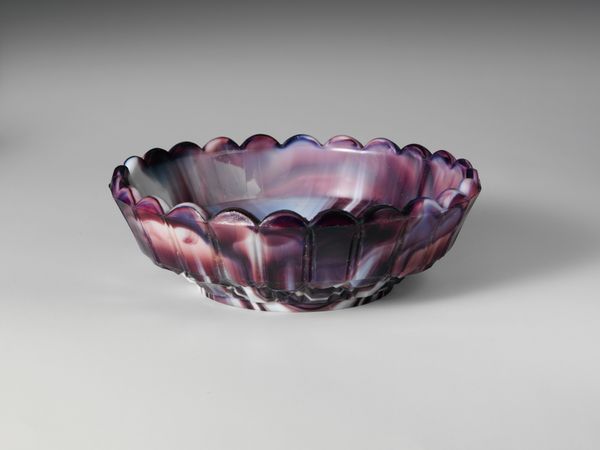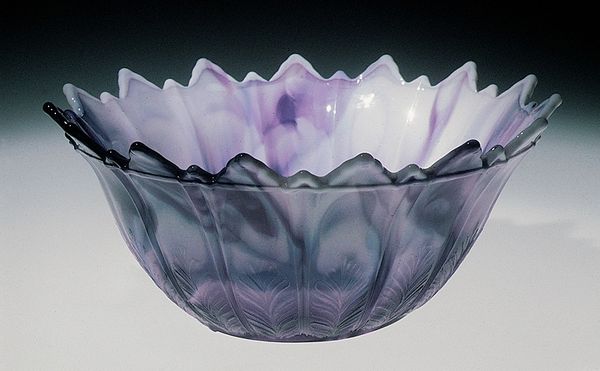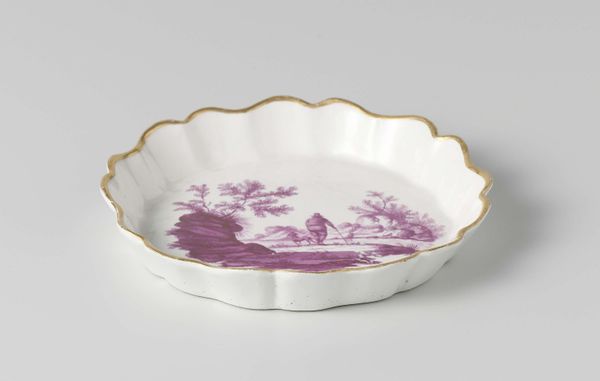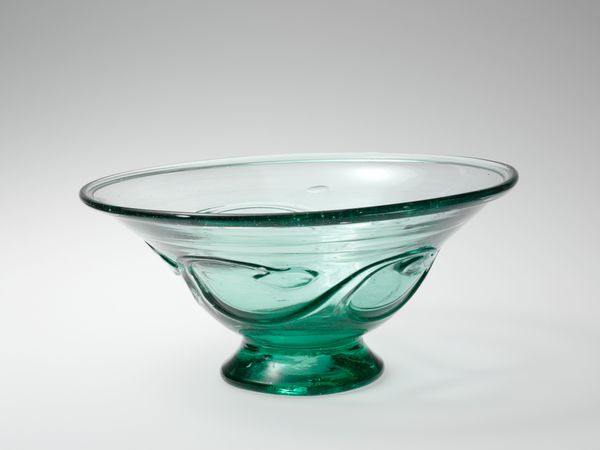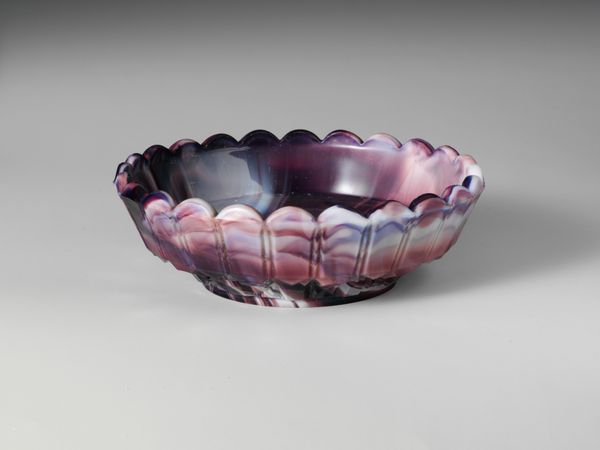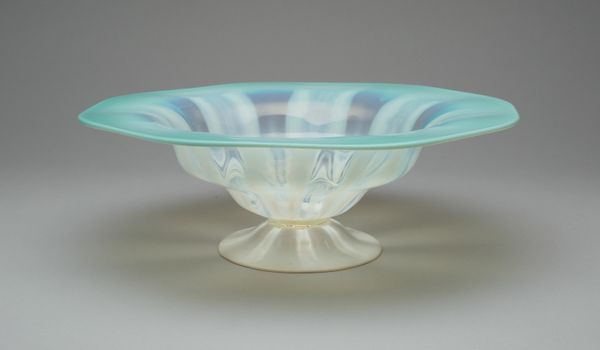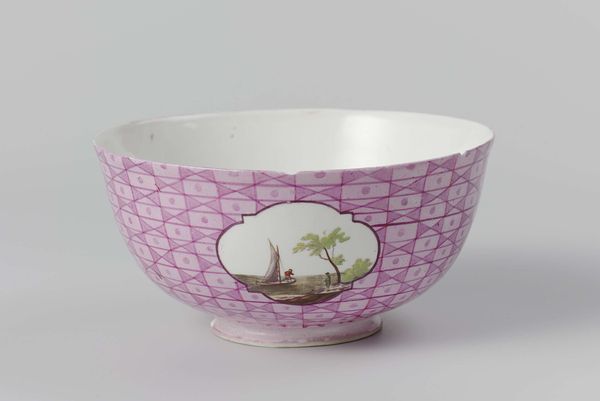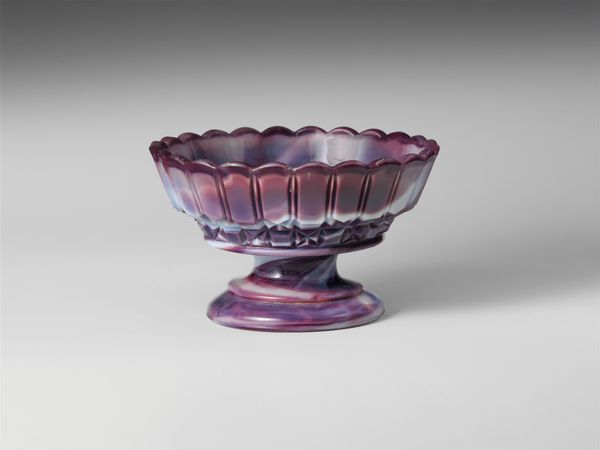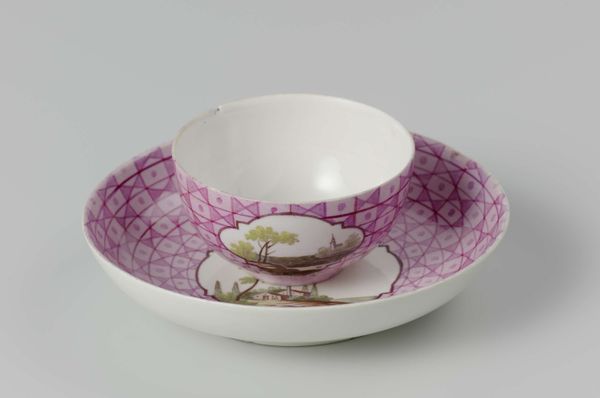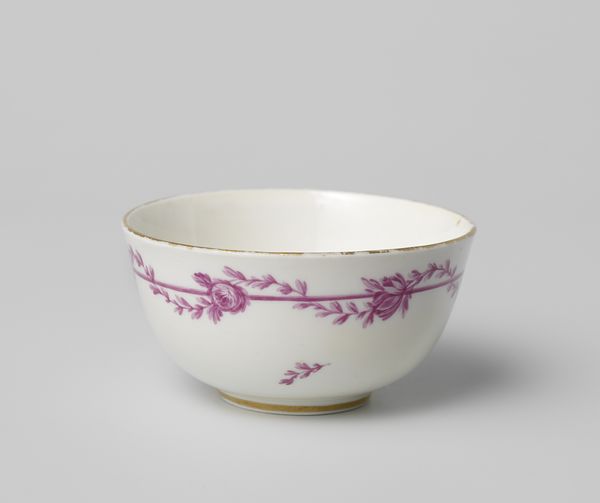
ceramic, glass
#
art-nouveau
#
ceramic
#
glass
#
ceramic
#
decorative-art
Dimensions: height 6.5 cm, width 13.5 cm, depth 9 cm
Copyright: Rijks Museum: Open Domain
Curator: Isn't this "Schaal met clematis", crafted around 1900-1902 by Émile Gallé, just exquisite? The muted purple glass gives it such an ethereal feel. Editor: It does have a ghostly loveliness about it. The craftsmanship seems painstaking, but it begs the question: what practical function did such an object serve for its owner, or the person who made it? Curator: Beyond its functionality as a bowl, it served as an expression of Art Nouveau ideals—a rejection of industrial uniformity. These pieces offered visual representations of nature, which in the cultural zeitgeist were feminine ideals. Its flowers speak to the objectification of femininity. Editor: Objectification, certainly. It speaks also to class aspirations, the owner clearly acquired something fragile, luxury glass made by someone with expertise in chemistry, firing techniques, and carving. The value would lie in the high level of skill in crafting, layering, and acid-etching. Curator: Exactly! The piece encapsulates the spirit of its era. The clematis itself—a symbol of mental beauty—reflected aspirations toward artistic genius during a period of shifting cultural paradigms. Editor: Did these blooms carry an alternate significance linked to societal roles? I'm thinking the role women occupied as ornaments to home and garden at that time. This seems like an assertion, that beauty is found not through physical strength, like iron production, but something quite domestic. Curator: The intersectionality of gender and class within Art Nouveau designs is what makes it rich for our historical moment. As we grapple with issues of inequality, looking at pieces like this lets us interrogate our own preconceptions about beauty. How it becomes connected to power. Editor: For me it all starts with process. What materials, what technologies are needed, what kind of workshop conditions created it? We see value created in specialized labor but is this labor equitable in society at the time? In what way? And finally what cultural capital did these materials hold then versus now? These things are far more important in how value in these pieces shifts over time. Curator: Fascinating thoughts! These bowls invite multiple approaches; their significance is multi-layered, it will reveal a lot from all angles. Editor: Yes, a reminder that the act of observing a decorative artwork invites new perceptions of our place in material existence, one small layer at a time.
Comments
No comments
Be the first to comment and join the conversation on the ultimate creative platform.
